
Monoctenia smerintharia, more commonly known as the dark leaf moth, is a moth of the family Geometridae first described by Rudolf Felder and Alois Friedrich Rogenhofer in 1875. It is found in Australia. The larvae feed on the leaves of gum trees.
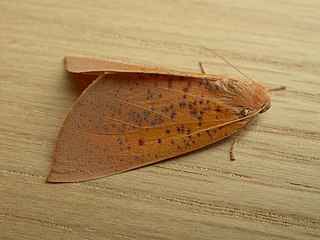
Plesanemma fucata, the lemon gum moth, is a moth of the family Geometridae. The species was first described by Rudolf Felder and Alois Friedrich Rogenhofer in 1875. It is found in the southern half of Australia.

Halone sejuncta, the variable halone, is a moth of the subfamily Arctiinae first described by Rudolf Felder and Alois Friedrich Rogenhofer in 1875. It is found in Australia in Queensland, New South Wales, the Australian Capital Territory, Victoria, Tasmania and South Australia.
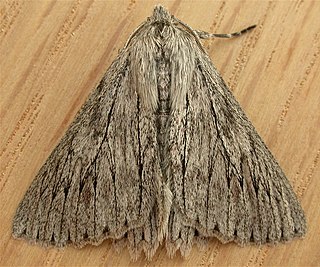
Cyneoterpna is a genus of moths in the family Geometridae erected by Louis Beethoven Prout in 1912.

Declana is a genus of moths in the family Geometridae that is endemic to New Zealand. The genus was erected by Francis Walker in 1858.

Hagnagora is a genus of moths in the family Geometridae erected by Herbert Druce in 1885.
Ischnopteris is a genus of moths in the family Geometridae described by Jacob Hübner in 1823.
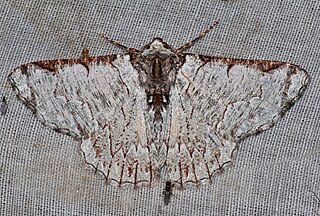
Lophophelma is a genus of moths in the family Geometridae described by Prout in 1912.

Monoctenia is a genus of moths in the family Geometridae erected by Achille Guenée in 1857. All species are found in Australia.
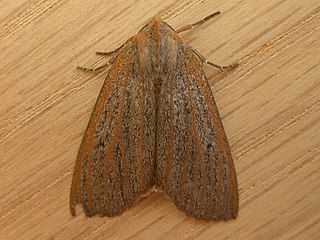
Paralaea is a genus of moths in the family Geometridae described by Edward Guest in 1887. All the species live in Australia.

Plesanemma is a genus of moths in the family Geometridae erected by Peter B. McQuillan in 1984. Both species are found in Australia.

Pseudocoremia is a genus of moths in the family Geometridae erected by Arthur Gardiner Butler in 1877. This genus is endemic to New Zealand.

Parepisparis lutosaria, the bright twisted moth, is a species of moth of the family Geometridae first described by Rudolf Felder and Alois Friedrich Rogenhofer in 1875. It is known from the Australian states of Queensland, New South Wales and Victoria.
Herochroma usneata is a moth of the family Geometridae first described by Felder and Rogenhofer in 1875. It is found in northern India.

Lophophelma luteipes is a moth of the family Geometridae first described by Felder and Rogenhofer in 1875. It is found in China, the north-eastern Himalayas and Sundaland. The habitat consists of montane areas.

Pasiphila fumipalpata is a moth in the family Geometridae. It is endemic to New Zealand.

Epiphryne undosata is a moth of the family Geometridae. It is endemic to New Zealand.
Thallarcha oblita, the hidden footman, is a moth in the subfamily Arctiinae. It was described by Rudolf Felder and Alois Friedrich Rogenhofer in 1875. It is found in Australia, where it has been recorded from the Australian Capital Territory, New South Wales and Victoria.
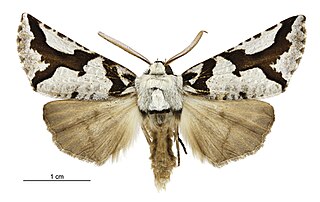
Declana egregia, commonly called the South Island lichen moth or zebra lichen moth, is a moth in the family Geometridae, endemic to New Zealand. This species was first described by entomologists Baron Cajetan von Felder and Alois Friedrich Rogenhofer in 1875 under the name Chlenias egregia.

Asaphodes obarata is a moth in the family Geometridae. It is endemic to New Zealand. It is classified as critically endangered by the Department of Conservation.















